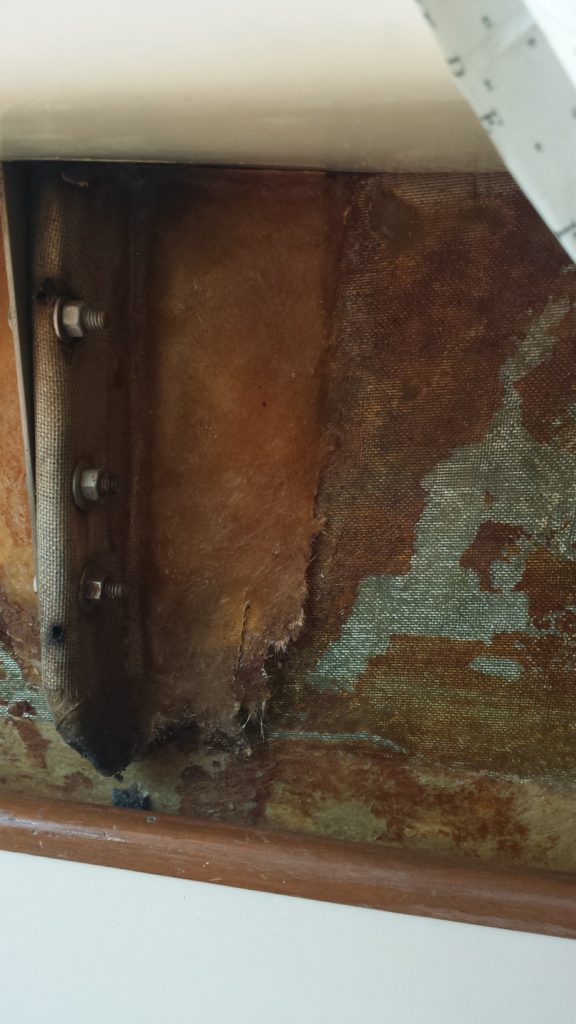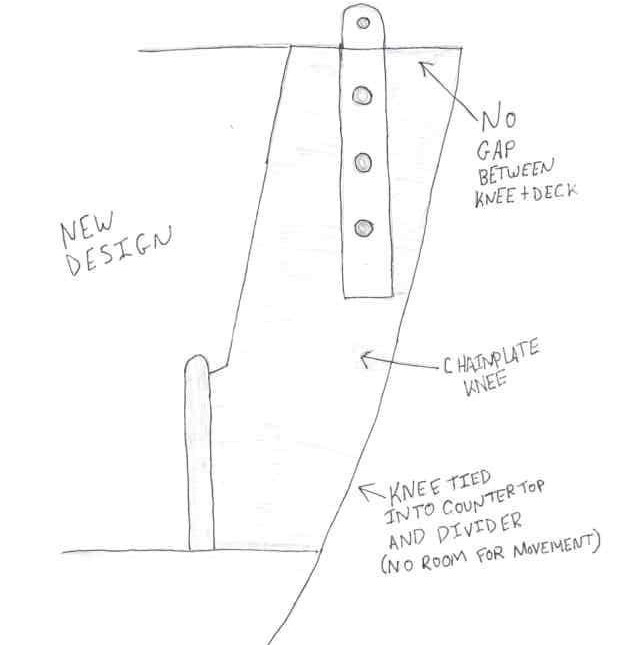When we first looked at Affinity, our Sailstar 26, the owner had warned us that the chainplates were leaking.
I also noticed that, while looking at the side of the hull, there were indentations where each of the chainplates were attached to the hull. I was looking for a bit of a project boat, and the asking prices of the boats we were looking at also put is squarely within the “project boat” realm. With what we were spending, hiring a surveyor would probably cost us quite a lot compared to what we ended up paying for the boat.
Anyway, the end result is that I failed to notice the extent of the repairs needed to the chainplate knees in order to be able to sail the boat with any confidence.
Here’s my (maybe not-so) sound and (maybe not-so) logical reasoning as to why I didn’t see the full extent of the repairs needed until shortly after we bought our boat:
It was close to Springtime. We already looked at a lot of boats, and I wanted to buy one.
The chainplates were underneath fiberglass covers, and some of the screws couldn’t be easily removed. I wasn’t a surveyor, so it felt weird to me to take someone else’s boat apart. So I didn’t.
There was a LOT of stuff on the boat. It was hard to see the actual boat through the layers of carpet, mats, and stuff on all the shelves of the boat.
I went into this assuming that the boat we were going to buy would need a lot of work. This one came with a lot of extra stuff, good sails and a good motor, so I felt like we were getting our money’s worth already.
One of the first and easiest tasks we completed was to get rid of the carpet and felt lining on the inside of the main cabin. There was a 1970’s yellow-brown felt adhered to the cabin walls, and pieces of blue outdoor carpet were glued on top of the felt at some later time. Both were moldy and damp, and also darkened the cabin quite a bit. Our plan was to remove this stuff, then eventually clean and paint the walls white to match the cabin roof liner.
After removing the carpet and pulling and unscrewing and pulling some more to get the fiberglass covers out of the way, I realized (summarized above) that there was plenty of “project” in our old project boat.
WHAT WAS WRONG WITH THE OLD DESIGN?

There was a gap between all of the chainplate knees and the deck of the boat. Some were worse than others, but each chainplate shared this basic “design.” The upward pull of the rigging was causing the knee to separate from the inside of the cabin, as it was only attached to the side of the hull. Over time, the movement of the hull and knee coupled with the force of the rigging pulling on the area caused the knees to delaminate from the hull at their lowest points. This allowed the chainplates to move around slightly and eventually caused leaks, which softened some of the plywood structure of the knees over time.
On the Sailstar 26, there is a dinette on the port side of the boat. Under the portlights, there is a shelf and piece of plywood closing off the hull and creating a squared-off section to sit against.
The chainplate for the lower aft shroud was directly above this shelf. It was leaking substantially and had rotted the plywood shelf under it. I decided to remove all of this and replace the knee.
After seeing all of this, I decided that now was a good time to change the design a little. I wanted to make the new knee larger–long enough to attach it to the hull, the deck, and the new shelf. I thought that, by over-building it a little, I would be able to increase its overall strength, eliminate any opportunities for the knee to twist or flex, and lock it in place with multiple attachment points.
My New Design


Like the Design?
Would you like me to work on your boat or other project? Or, do you just have some questions or want more information about this project?
If so, feel free to contact me using the “send me a message” form on the homepage, or by emailing me at joe@overthereef.com.
